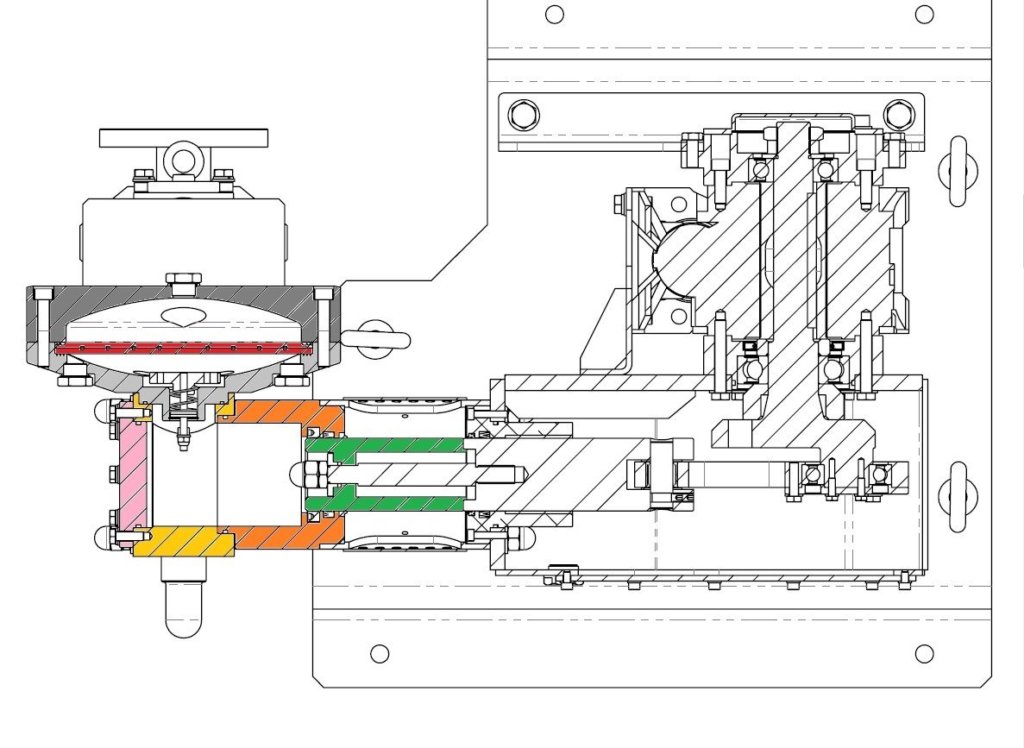We have seen in this article which series of pumps is best suited for the pressure transfer of viscous and moderately abrasive fluids; when the fluid is so abrasive that even the liner and the pumping rod – although coated with hard material (carbides, oxides, etc.) – are damaged, it is necessary to switch to the slurry diaphragm pump type.
The piston-diaphragm pump (which differs from the simple diaphragm pump) is basically the evolution of the simple piston pump.
The difference is that the element in contact with the sludge is the diaphragm (normally made of EPDM) and no longer the piston.
It is called piston-diaphragm because the piston in this version of the pump is used to move the hydraulic fluid, which in turn is responsible for the swelling of the diaphragm

In this case, therefore, due to the high abrasion of the sludge to be pumped, the piston is not in direct contact with it, but its job is to pump the hydraulic fluid that moves the diaphragm, which then pumps the sludge.
Basically, the diaphragm pump can be seen as an upgrade of the original piston pump in that there is the extra diaphragm unit with its adjustment and calibration system.
The piston-diaphragm pump is preferred in cases where the fluid to be pumped is highly abrasive. In all other cases where the abrasion is moderate, it is still better to opt for a piston pump with a ceramic coating on the wetted parts.
This is both because the piston-diaphragm pump is more expensive and because it is more difficult to calibrate and maintain: the ‘basic’ piston pump is much simpler than the diaphragm slurry pump.
Whether the pump is mechanically or hydraulically driven, there is a diaphragm version: for mechanically driven piston pumps (Libra series), the diaphragm version is called Libra-ME.
For the hydraulically driven piston version (Dragon series), the diaphragm extension is called Dragon-ME.